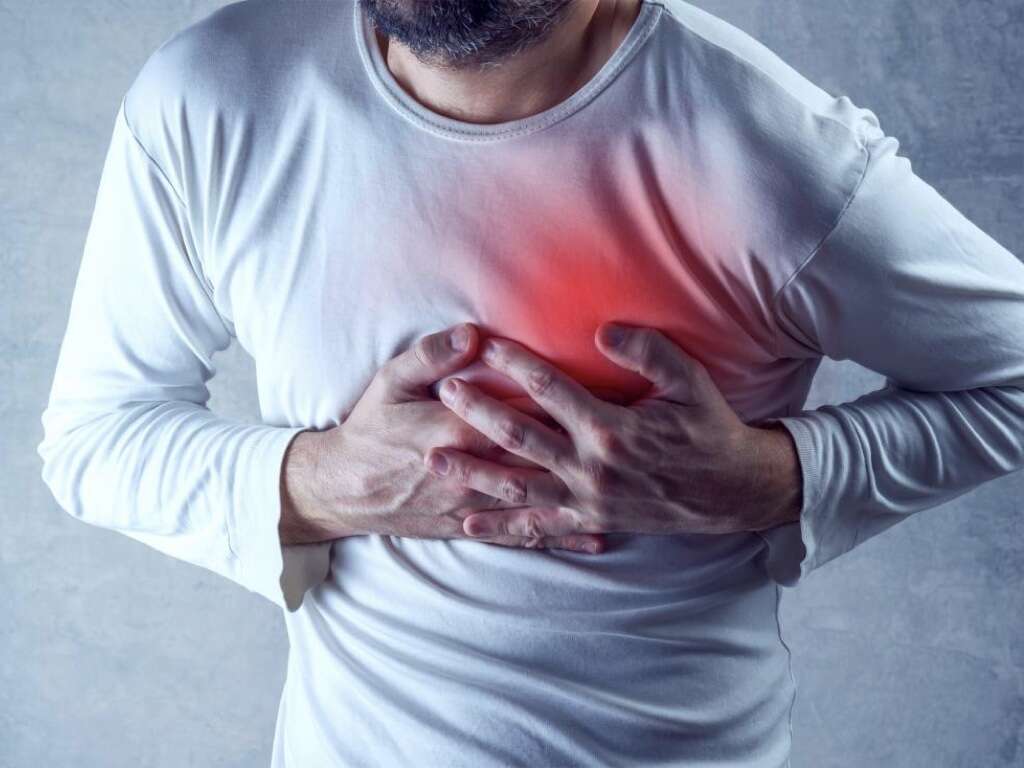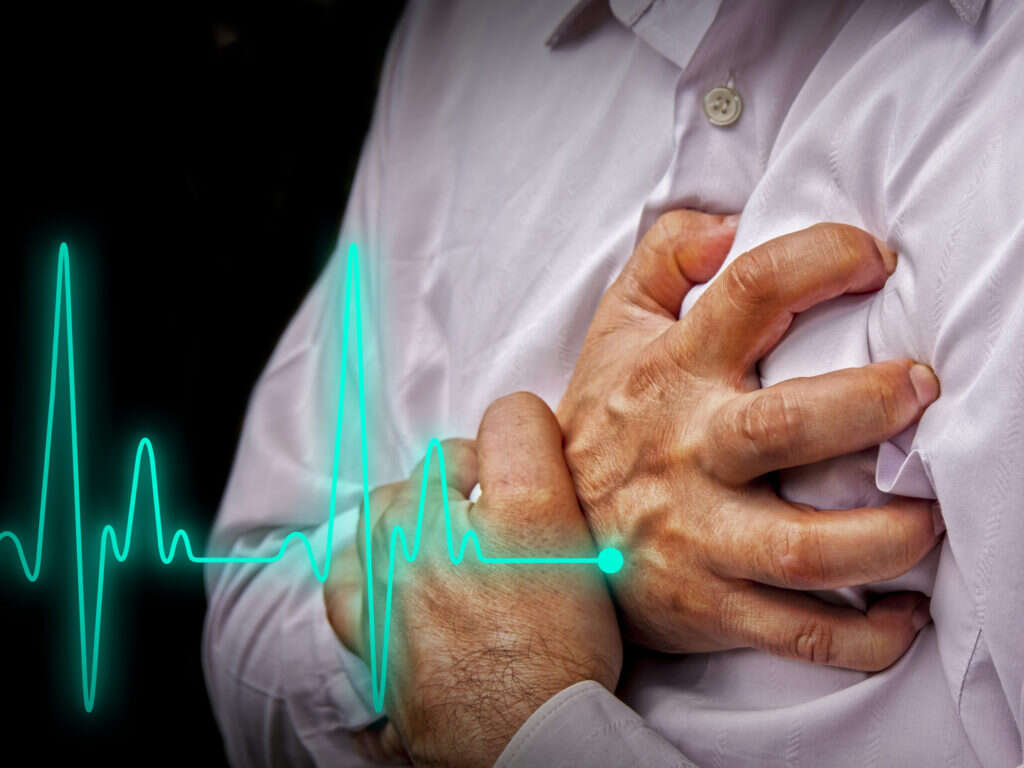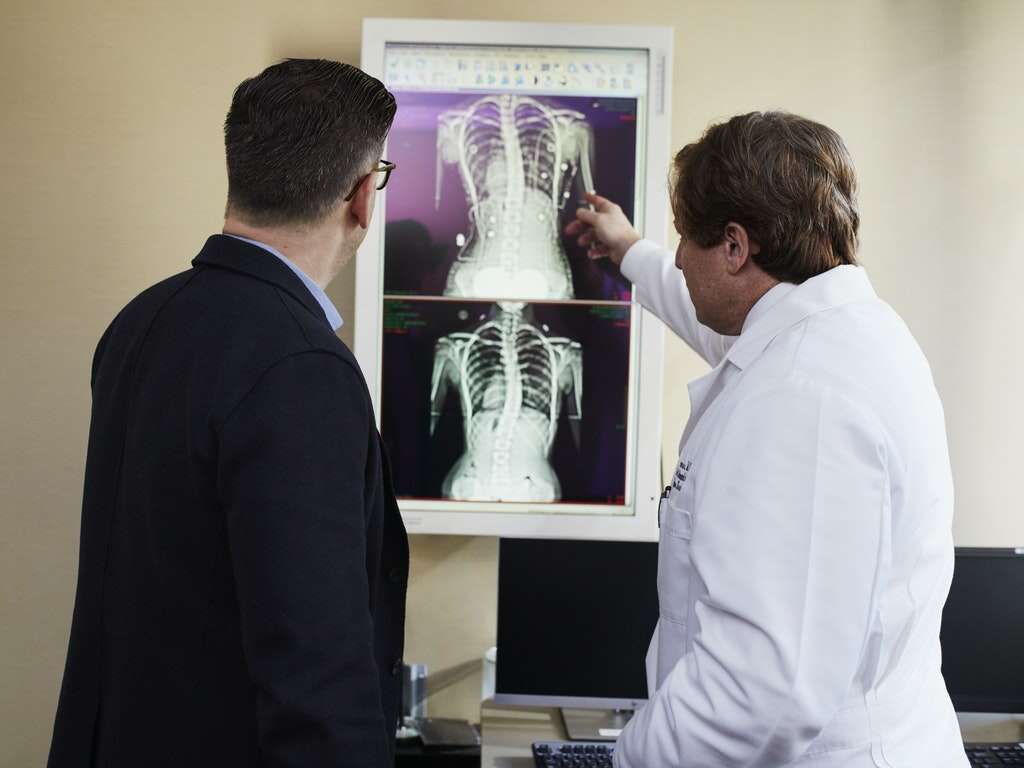10 Causes of Sternum Pain
The sternum or breast bone refers to the long, flat bone in the center of the chest. It connects to the ribs to form the anterior portion of the rib cage. This means that it functions to protect the lungs, heart, and major blood vessels.
It is one of the largest and longest flat bones in the body. The sternum can be divided into three parts: the manubrium, body, and xiphoid process. It also supports the clavicles and serves as a connecting point for the sternocleidomastoid muscles.
Since the sternum is connected to many other processes, many conditions can cause sternum pain. This article looks at 10 causes of sternum pain.

Cause #1: Heartburn
Heartburn is a condition where there is a burning sensation in the upper central abdomen or central chest. This sternum pain or discomfort may radiate to the jaw, neck, or throat. It is most commonly due to regurgitation of gastric acid from the stomach into the esophagus.
Heartburn usually occurs after eating. Pain is often worse when one bends forward or lies down. In most cases, heartburn resolves on its own without treatment. However, antacids such as calcium carbonate, may help with the symptoms. Other medications such as proton pump inhibitors and H2 receptor antagonists may be beneficial as well.

Cause #2: Gastroesophageal Reflux Disease
Gastroesophageal reflux disease or acid reflux is a chronic condition where stomach contents backflow into the esophagus. Other symptoms include heartburn, sternum pain, bad breath, vomiting, breathing issues, and wearing away of the enamel of the teeth. It can lead to complications such as Barrett’s esophagus, esophagitis, and esophageal stricture.
Risk factors of this condition include smoking, obesity, pregnancy, certain medications, and hiatal hernia. Management usually involves lifestyle changes and medications such as proton pump inhibitors, antacids, prokinetics, and H2 receptor blockers.
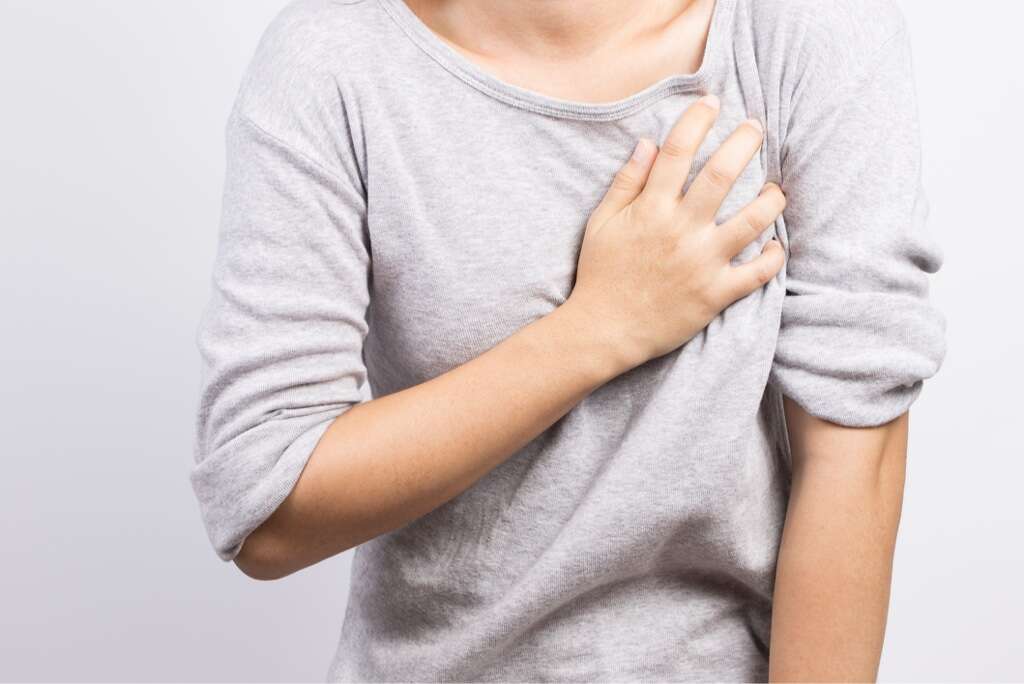
Cause #3: Pneumonia
Pneumonia is a condition where there is inflammation of the alveoli. It can cause symptoms such as difficulty breathing, chest pain, sternum pain, fever, productive cough, or dry cough. The severity of pneumonia can vary. It is usually caused by a viral or bacterial infection. Other less common causes are autoimmune diseases, some medications, and other microorganisms.
The risk of pneumonia increases if the individual has heart failure, chronic obstructive pulmonary disease, cystic fibrosis, asthma, diabetes, and a weakened immune system. Smokers are also at risk. It can be diagnosed based on symptoms, medical imaging, and sputum culture. Vaccines for the prevention of certain types of pneumonia are also available.
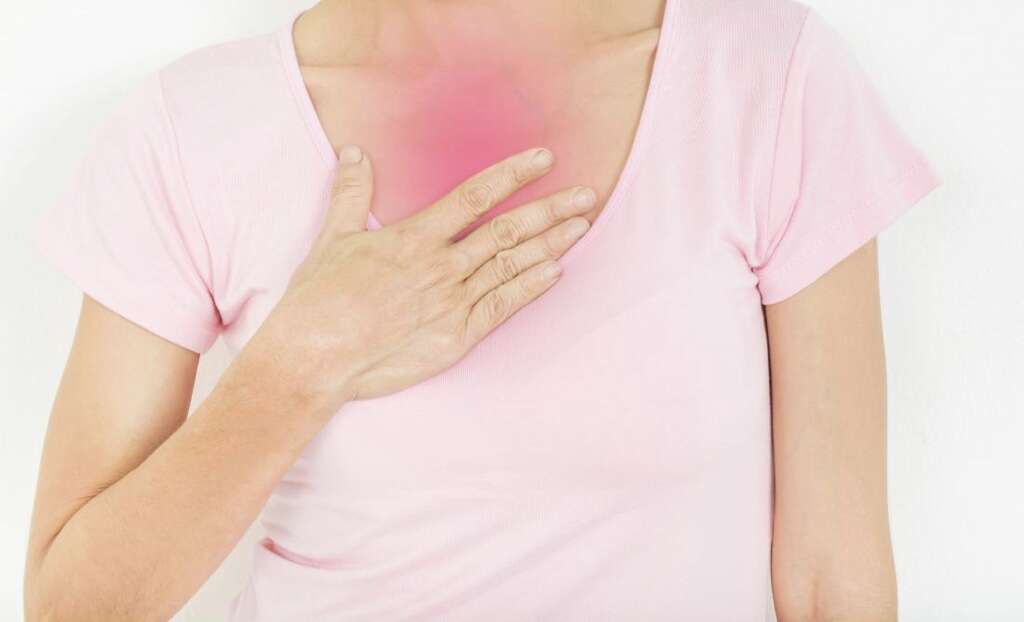
Cause #4: Panic Attack
Panic attacks are episodes where a person experiences intense fear, shaking, sweating, palpitations, numbness, and shortness of breath. Episodes usually last about 30 minutes but differ for every individual.
Patients having a panic attack have often reported a fear of losing control and a chest pain located over the sternum (sternum pain). Panic attacks can occur due to post traumatic stress disorder, panic disorder, drug use disorder, social anxiety disorder, and depression. Risk factors of panic attacks are psychological stress, caffeine use, and smoking. Treatment depends on the underlying cause and usually involves medication, counseling, muscle relaxation techniques, and breathing techniques.

Cause #5: Costochondritis
Costochondritis or chest wall pain is usually a sudden and temporary inflammation that affects the costal cartilage that connects the rib to the sternum. It is one of the most common causes of chest pain. While costochondritis is not a serious condition, it is important that all chest pain should be considered a medical emergency until a life-threatening condition is ruled out.
Symptoms of costochondritis include pain or discomfort in the ribs, sternum pain, pain that is worsened during breathing or coughing, and sharp pains in the sternal region. Treatment options are limited but includes rest and pain medication.

Cause #6: Sternoclavicular Joint or Collarbone Injury
The sternoclavicular joint connects the collarbone to the top of the sternum. Injury at this joint can lead to discomfort and pain in the sternum. There can also be swelling, clicking, and stiffness at the joint.
The collarbone or clavicle is connected directly to the sternum. This means that any injury to the collarbone such as dislocations, injuries, or fractures to the clavicle can cause sternum pain. Injury to the collarbone can result in intense pain, especially during movement.
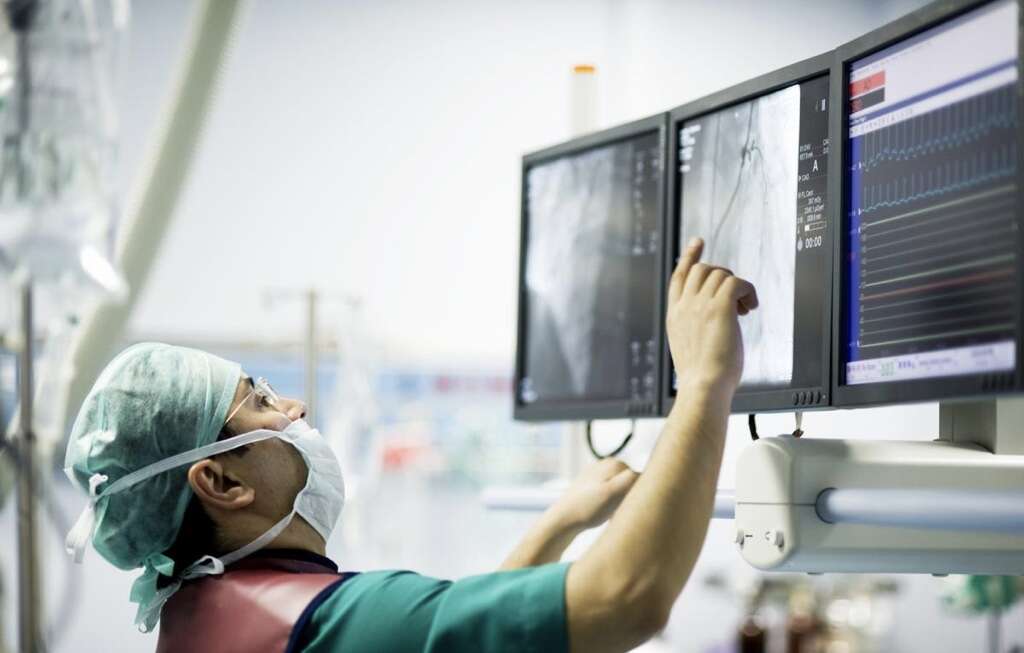
Cause #7: Heart Attack
A heart attack or myocardial infarction occurs when there is decreased blood flow to a part of the heart causing damage to the heart muscle. It can cause symptoms such as pain or discomfort in the left side or middle of the chest (sternum pain), which may radiate upward to the neck, jaw, arm, and shoulder. The pain or discomfort felt can sometimes be mistaken for heartburn. It is often reported as a crushing pain.
Other symptoms are diaphoresis, tiredness, feeling faint, shortness of breath, and nausea. Risk factors for a heart attack include obesity, hypertension, smoking, sedentary lifestyle, diabetes, and excessive alcohol use, among others.

Cause #8: Peptic Ulcer Disease
Peptic ulcer disease occurs when there is a break in the stomach lining, or first part of the small intestine known as the duodenum. It can be divided into a gastric ulcer (in the stomach) or duodenal ulcer (first part of small intestines).
The most common symptoms include upper abdominal pain which may be dull or burning, poor appetite, weight loss, belching, or vomiting. It can cause complications such as bleeding and perforation. It is usually caused by the bacteria Helicobacter pylori or use of nonsteroidal anti-inflammatory drugs (NSAIDs). Other less common causes are Crohn’s disease, Behcet’s disease, liver cirrhosis, and Zollinger-Ellison syndrome. Peptic ulcer disease may also cause sternum pain.
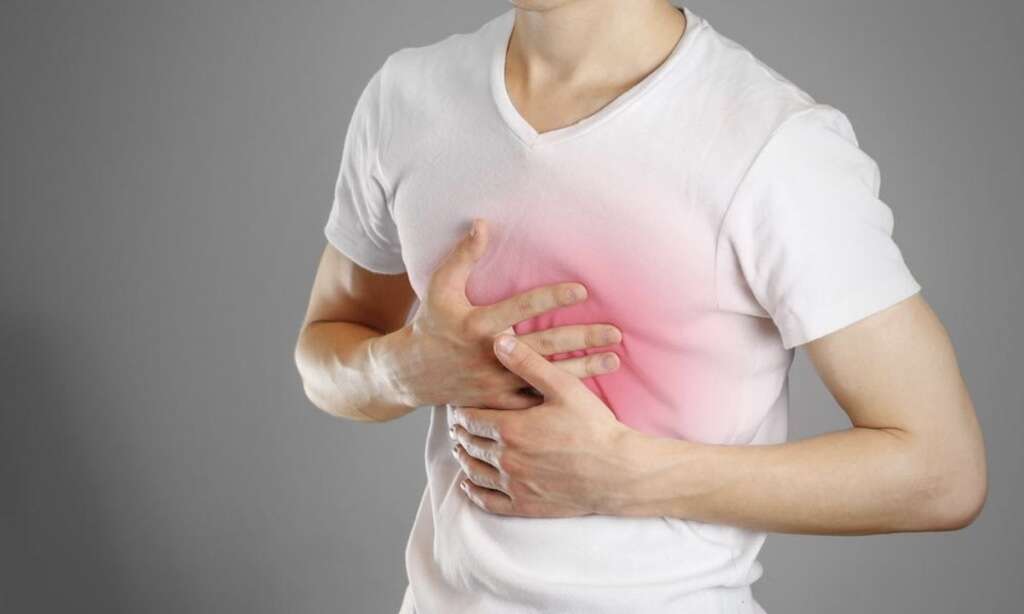
Cause #9: Hiatal Hernia
A hiatal hernia refers to the slipping out of the abdominal organs through the diaphragm into the thoracic cavity. It can lead to complications such as laryngopharyngeal reflux or gastroesophageal reflux disease.
Symptoms include chest pains, trouble swallowing, heartburn, and more. Risk factors of a hiatal hernia include advanced age, obesity, scoliosis, major trauma, and some surgery. Management includes elevating the head of the bed, adjusting eating habits, weight loss, and medications such as proton pump inhibitors and H2 blockers. Hiatal hernia is also a possible cause of sternum pain.

Cause #10: Pleurisy
Pleurisy is a condition where there is inflammation or irritation of the pleura. The pleura can be divided into the visceral pleura and parietal pleura, which usually glide smoothly over each other during breathing. When inflammation or irritation of the pleura occurs, there is friction when the pleura glide over each other causing pain during breathing.
Other possible symptoms include fever, weight loss, coughing, and shortness of breath. The most common cause of pleurisy is a viral infection. Other potential causes are lung cancer, pulmonary embolism, pneumonia, heart surgery, autoimmune disorders, pancreatitis, and asbestosis. Pleurisy may also cause pain at the sternum (sternum pain).





